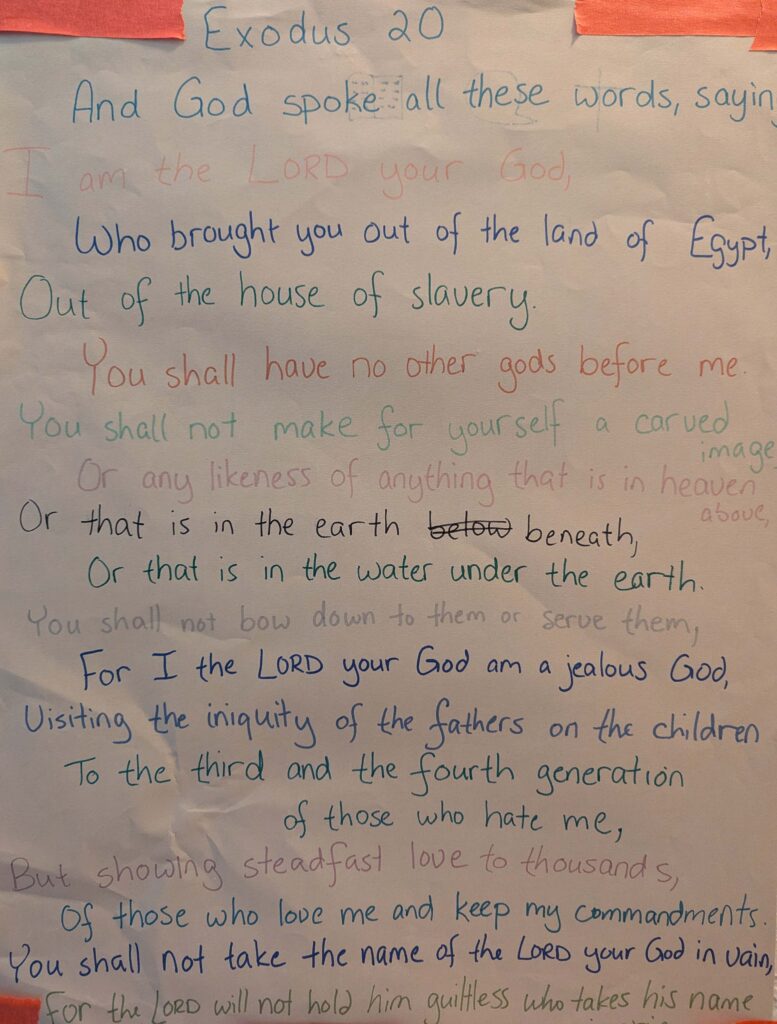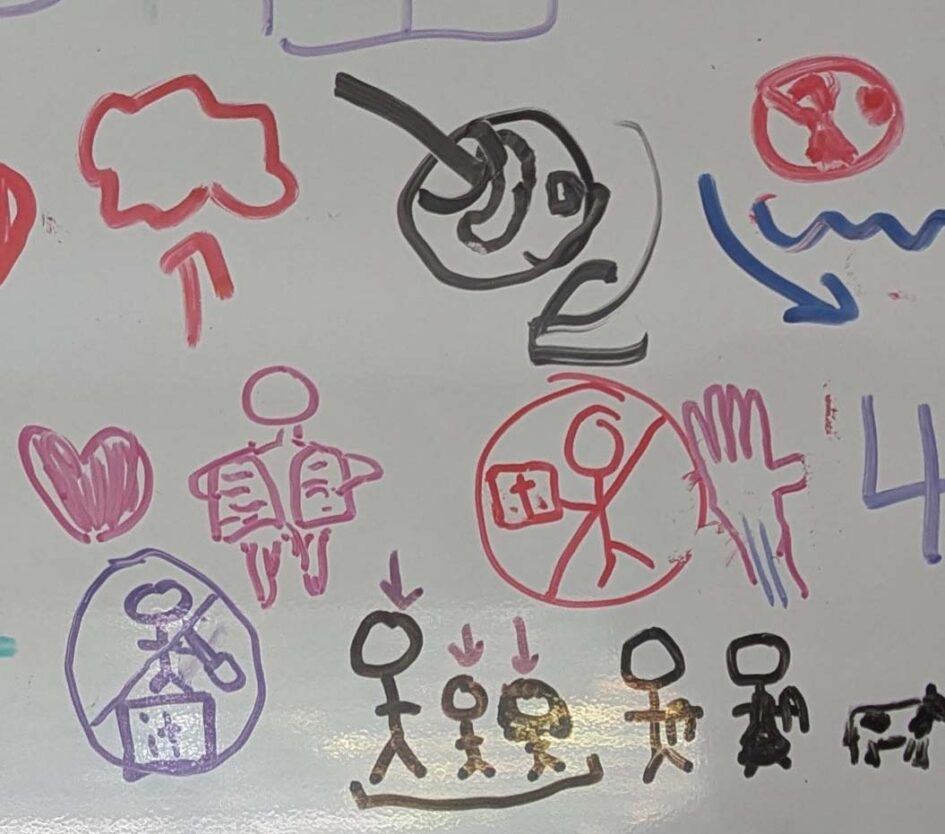As discussed in a prior post, I stumbled into the practice of teaching my kids (and myself) the books of the Bible and, subsequently, passages of Scripture. It has been surprisingly successful (both in the engagement of my children as well as their interest in the material), and I thought it worthwhile to reflect (and, secondarily, share) the procedure. I don’t really intend for this to be prescriptive, as, for us, it has been organically shaped and molded to fit our routines and the temperament of my kids. Perhaps it can serve as inspiration, or a place to start? I’ll proceed with a descriptive narrative of the process and then formalise it as a descriptive protocol.
First, it’s important to select a passage. I prefer something more substantive than the pithy albeit disembodied one-liners I recall from Sunday School. These may have their place to evoke a larger context…but even something as iconic as John 3.16 is yet still empowered by its context. While you may be able to cite the reference in your sleep, do you know the conversants? Or that the speaker is offering a parallel to Moses lifting the snake in the wilderness? Or, consider verses 17-21 and how these clarify, personalise, and dictate an action/practice based on the message of John 3.16.
While I have so far dictated the sole passage to be memorised, I intend to provide the children some agency in the selection: ‘here are two passages, here are the backgrounds — which one would you prefer?’ This approach often has the unfortunate side effect that both seem implacably drawn toward opposites for which turn-taking, or having more than two passages with rank ordering, etc. might need to be implemented.
Second, I have written out the lines or phrases of the passage in changing colours. These must be short to reduce the burden of adding more content — I have found myself and kids thoroughly shocked at how easily to learn the next few words have been. Ideally, these would be segmented into continuous chunks (e.g., no ending with ‘a’ or ‘the’). Here’s how I first approached this:

While this has worked, I can imagine breaking apart the phrases even more. For example, breaking ‘for those who love me and keep my commandments’ into two sections (‘for those who love me’, ‘and keep my commandments’). I did this a little more on the second page for the latter half of the decalogue.
Third, while we reference this page when looking up a new passage (or to confirm the wording of a phrase we don’t quite remember), our primary source for reciting the verses is a series of hieroglyphs. Each day we add a couple more mnemonics representing key words or ideas. Sometimes I draw them, at other times my kids — though we typically brainstorm together how precisely to depict the content (we are also teaching them how to memorise, not just the passage — teach a kid to fish…).

Fourth, we begin by learning the new passage, repeating it a few times while look at the freshly-painted hieroglyphs. During this time, we’ll incredibly briefly discuss what the words mean or how the phrase contributes to the overall message (usually by prompting ‘what does this mean?’).
Fifth, we repeat the entire passage together. Once the passage becomes inordinately long, we may start halfway through.
Sixth, each kids repeats it in turn. Since both want to go first, we alternate. They’ll typically use the hieroglyphs for new sections, but for well-learned portions we may all dance or do some vaguely-relevant and oft indecipherable hand motions. I’m not sure how much to enforce precise wording and am somewhat inconsistent in the prompts (often, the more they struggle, the less I’ll make wording suggestions so long as the underlying message is clear — I’m hoping it’s easier to alter the precise wording later if ever…).
If we struggle over wording, I’ve occasionally broken a phrase into more hieroglyphs so that it’s easier to ‘sound out’ word-by-word. These don’t get added to the image above, but are intended to be more temporary scaffolds.
Finally, I’ll congratulate and praise them both for their hard work. I should probably start adding myself to step 6 and have them both evaluate and correct me when I err. I suspect that would both relish correcting their father.
Once the passage has been learned, I’m planning to slowly remove hieroglyphs, particularly from the first sections as they continue to cement the latter parts in their mind. (It’s worth recalling that while the first verses have been repeated over the course of three or so weeks, the latter parts or relatively fresh.)
Finally, when we have moved onto a new section of text, these hieroglyphs will be erased to make room for new ones, and we’ll change to weekly practice. For us, the most convenient (and regular) time occurs on the way to or from church. As they learn more, it will probably make sense to rotate through with decreasing frequency as they have been cemented into their minds.
Descriptive Protocol
- Preparation
- Select a passage.
- Write it out in small phrases on large posterboard or equivalent sheet of paper.
- Easy to read, and doesn’t require finding and squinting at the passage in a book or phone each time
- Daily Work
- Find the next phrase
- Determine how to represent the phrase in images
- Discuss the phrase’s meaning (and any troublesome words)
- Repeat the new phrase a few times together
- Read (from the images) and/or recite the passage together
- Parent read (from the images) and/or recites the passage alone with children reading the actual text, offering corrections, etc.
- Each child takes turns reading the hieroglyphs (or reciting)
- Other Notes:
- As the entire known passage becomes longer, start halfway through the memorised text to better focus on the latter parts of the passage.
- Once the passage has been learned, begin to erase the images (beginning from the start) until everything is erased and without learning anything new.
- Once a new passage of Scripture has been selected for memorisation, find a convenient weekly time to integrate into a routine the reciting of previously learned passages.
